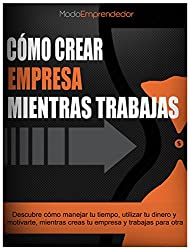
Writing a business plan is a great experience. As an entrepreneur you will have the opportunity to learn, test, improve and refine your great idea.
Additionally, it will help you to avoid mistakes in the future, to obtain financing, to have more clarity and to have your entire team working under the same objectives.
Contrary to what many people think, a business plan is not for investors, partners or banks; in reality is for you.
This is stated by Dale Partridge, creator of Startupcamp.com and author of the book “People over Profit”, who has developed more than 10 business plans in recent years, with which he has managed to raise more than $2.5 million dollars.
“Whoever fails in the plan, plans to fail”
This entrepreneur affirms that a business plan does not have to be extensive to be excellent. In fact, his business plans are between 10 and 15 pages long, enough space to explain the really important points of your idea.
On his blog, Partridge provides the framework he’s used for the past decade that enabled him to become a millionaire at age 27. Find it below.
How to make a business plan in 3 simple steps.

Part 1: Description of the company.
- Client: What is your customer’s problem and how are you going to solve it?
- Who are you: Mission, vision, values and description of the company.
- Equipment: Founders, partner investors, etc.
- Organizational structure: How your staff is organized, including freelancers, part-time workers and even positions that you intend to fill in the future.
Part 2: Product and operational strategies.
Make the following descriptions:
- Product: Physical details, manufacturing costs, packaging, transportation, technology.
- Client: Demographics, psychographics, market trends and benchmarks.
- Market: Measurement indicators, online marketing, advertising and promotion strategy.
And also a self-assessment.
- SWOT analysis: Weaknesses, Opportunities, Strengths and Threats.
Part 3: Financial projections and capital needs
- 3, 6 and 12 month financial projections: Sales, expenses, profit margin and net income.
- Competition: Find at least 3 competitors, assess their strengths and weaknesses.
- What capital do you need: How much money do you need to run your business?
- Use of funds: Exactly how you’re going to spend investors’ money.
- Exit strategy: When would you like to sell the business and to whom (if applicable).
- Contact information: How potential investors can contact you.
Also, never forget that before you need to write a plan, you need to test and perfect a business model, or it will be very difficult for you to generate market research and financial projections.
If you want to know more about this topic, we recommend the following two articles.
- What is a startup and a company (Main differences).
- Canvas business model: What it is and how to develop it.
- How to create a business model in just 7 days.
- Business model: Definition and examples that will inspire you.
- When and why you should write a business plan.
And remember, if you are really interested in creating your own business, you can read our book “How to create a company while working: Discover how to manage your time, manage your money and motivate yourself while creating a company and working for another” , where you will find all the information you need to found your own company, without having to leave your job.



